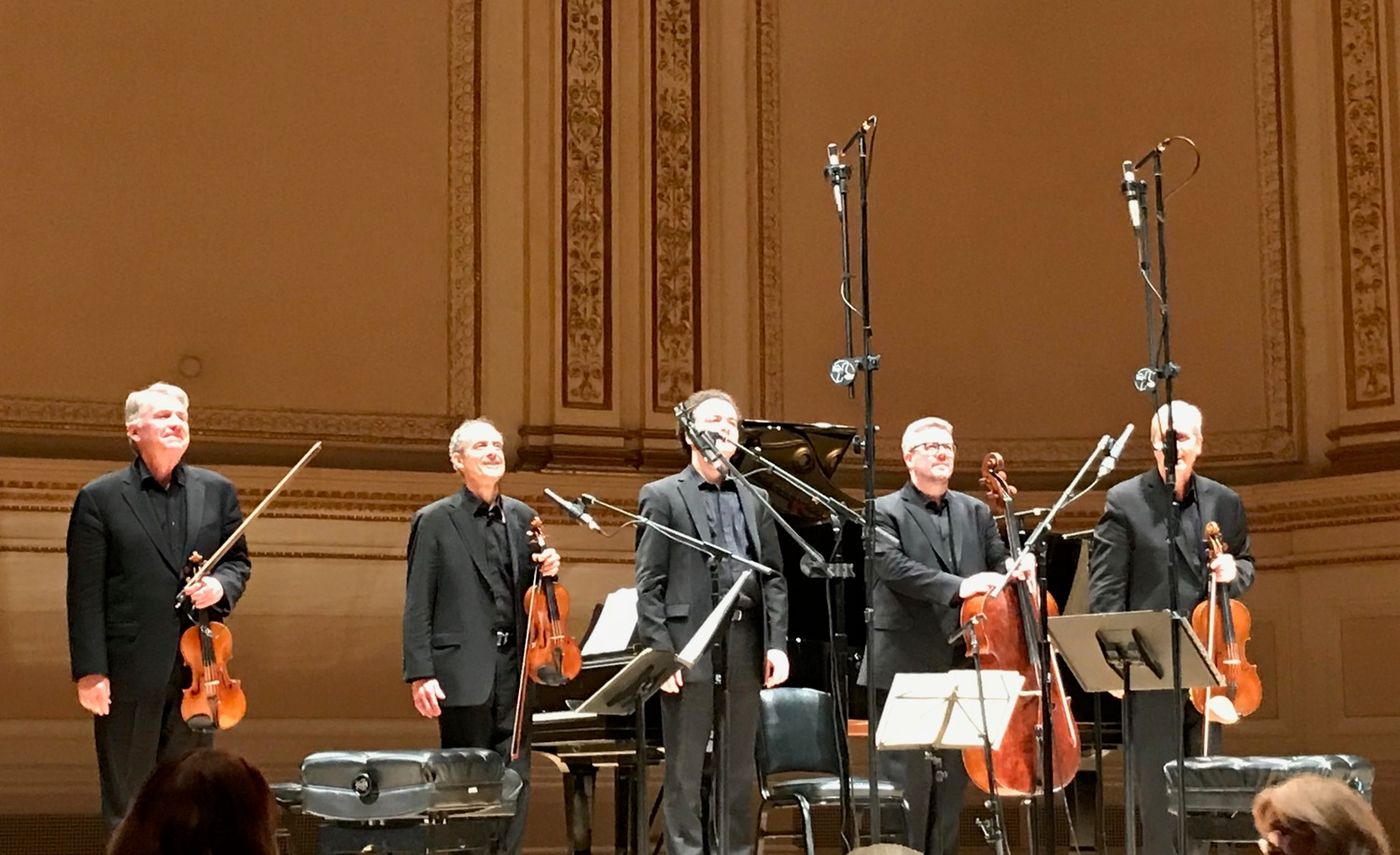Review: THE EMERSON STRING QUARTET WITH EVGENY KISSIN at Carnegie Hall

In the early Spring, a young person's fancy often turns to basketball. The split second timing, the non-verbal communication, the precision of getting the ball in the right place, and the physical coordination they all are equipped with adds up to intense teamwork. The five players have to be able to do it all.
Basketball is not the only example of such teamwork. In the classical music world, the piano quintet (piano and four members of the string family) is an ensemble which, in order to function properly, must have all of the qualities of a good basketball team...plus at least one more element which makes it unique. The performers must bring their own emotions and personalities to each note they play. The multi-Grammy Award winning, Classical Music Hall of Fame inductees known as the Emerson String Quartet exemplify this team spirit.
Eugene Drucker, one of the two violinists in the Quartet, says "the four of us have very distinct musical personalities both on the personal and musical levels....but as an ensemble we also have to know how to submerge our differences in pursuit of larger musical goals. Striking the right balance between the individuality of the "voices" in a quartet (or larger ensemble such as the quintet) and the unanimity of interpretation for the ensemble is a challenge that any successful group will have confronted."
On Friday, April 27th 2018, the Emerson String Quartet collaborated with celebrated Russian pianist Evgeny Kissin. The concert, presented at Carnegie Hall, featured Mr.Kissin in each work on the program.
The Quartet appeared in several iterations; for the first piece, Wolfgang Amadeus Mozart's (1756-1791) Piano Quartet in G minor, K.478, the ensemble was made up of Mr. Kissin on piano, Philip Setzer on violin, Lawrence Dutton on viola, and Paul Watkins on cello. This quartet (the word not only refers to the number of people but to the genre itself), was composed in 1785 during a highly productive time in Mozart's compositional life.
The ensemble tore enthusiastically into the fierce opening statement of the quartet. Mr.Kissin's part had many scale-like, rapid passages which he played with steely fingers and judicious pedaling. To use the pedal too much on rapid-fire notes is to blur them out. Mr. Kissin was only pedaling (for the most part) the first beat of each measure, giving a touch of emphasis right where it needed to be. His playing was by turns graceful and delightfully virtuosic. The main themes of the each movement were smoothly handed off between all the players.
Their non-verbal communication consisted not only of visual cues, but also of listening cues. They were breathing almost as one. According to Mr. Drucker, "we know what to expect from each other and certain matters of split-second timing are somewhat easier after playing together for so many years " 3/4 of the group have been playing together for 41 years. Mr. Watkins replaced David Finckel on cello five years ago. He fits in quite well indeed.
Gabriel Fauré' (1845-1924) composed his Piano Quartet in C Minor Op.15 between 1876 and 1879. Recovering from a deep depression after his fiancée broke their engagement, Fauré's pain was channeled into this piece, particularly in the Adagio movement. The violinist for this piece, Mr. Drucker, poured his heart out in this section, playing with deeply felt expression. The piano took a lesser role here. In fact, Mr. Kissin did not attempt to take the spotlight away from the other musicians during the concert. His was a performance of consummate artistry in every respect.
The final work on the program was an audience favorite and one which featured the entire Emerson Quartet (Mr. Setzer on 1st violin, Mr. Drucker on 2nd violin, Mr. Dutton on viola, and Mr. Watkins on cello) and the quietly ebullient Mr. Kissin on piano. Antonín Dvorák (1841-1904) wrote his exquisite Piano Quintet in A major Op.81 in 1887. The two most well-known sections, the second movement Dumka: Andante con moto, and the scintillating third movement Scherzo (Furiant): molto vivace revealed Dvorák's folk-like tunes in all of their glory. Shifting tonalities and moods proliferated in every movement of this work. Mr. Dutton lent a haunting quality to the gorgeous Dumka song, making his viola sing with a rich, nuanced sound. The Scherzo-(Furiant) gave each musician the chance to demonstrate perfect articulation and absolutely brilliant playing. The audience fairly danced in their seats.
The Quintet's encore was the sparkling, joyous, and wild Scherzo movement of Dmitri Shostakovich's Piano Quintet. It was clear that all five of the musicians were having as much fun with it as the audience!
Reader Reviews
Videos
